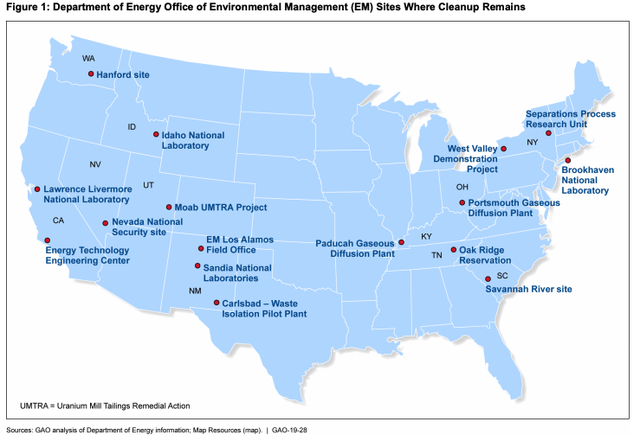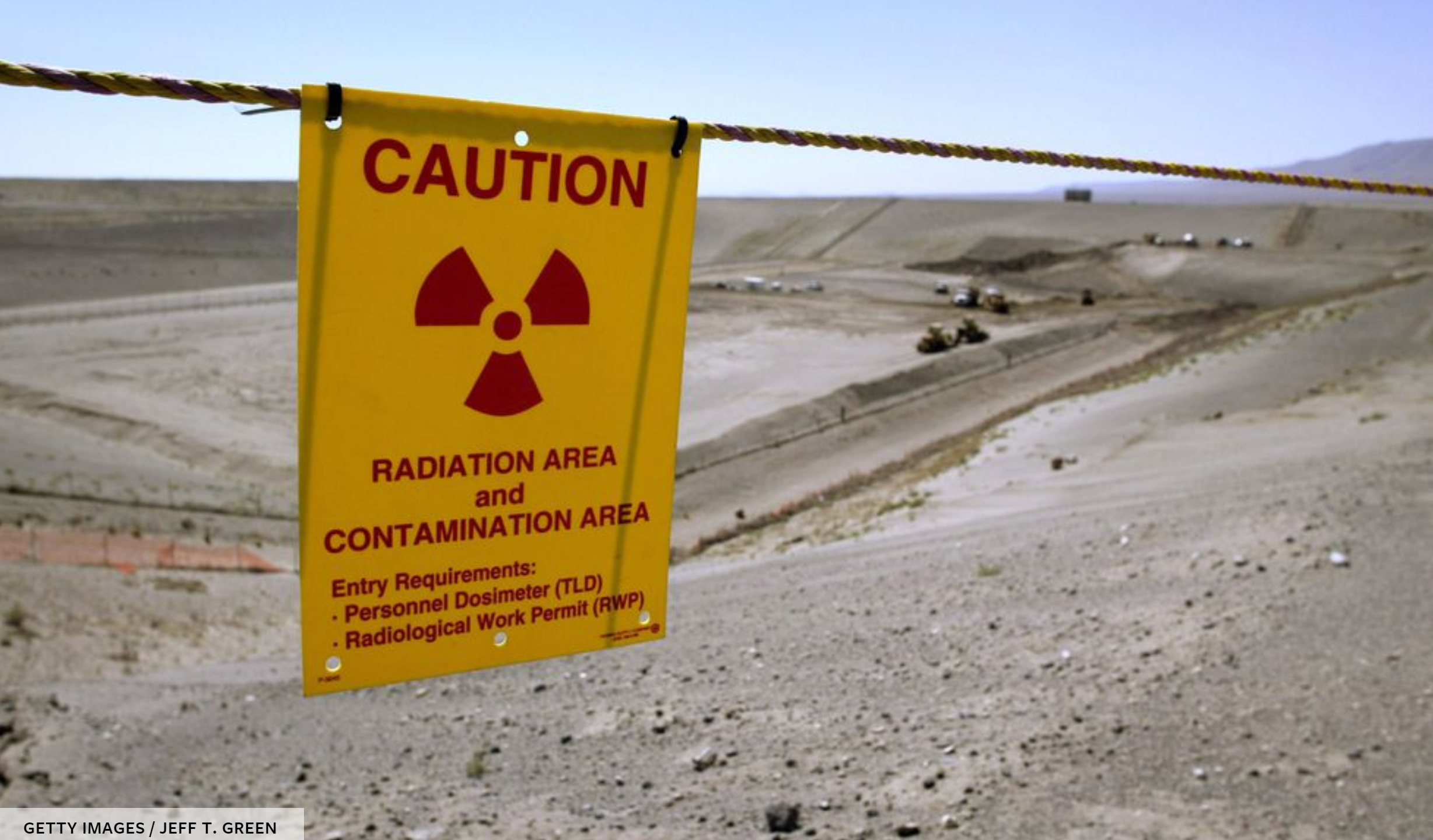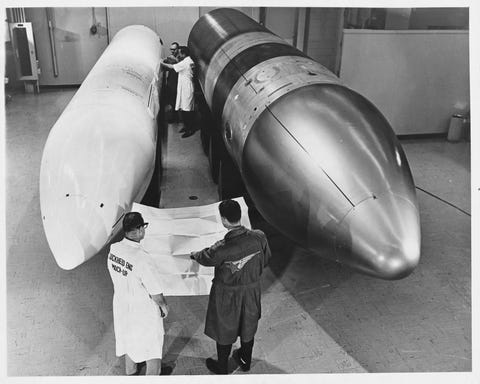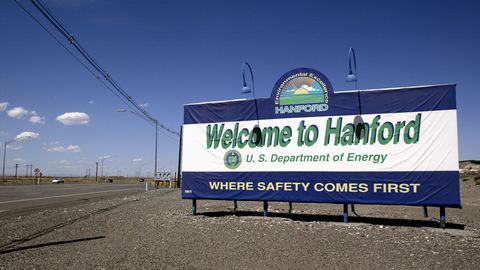The bill for a half century of nuclear weapons production is growing fast.
“The GAO [Government Accountability Office] estimates the EM’s “environmental liability grew by almost $105 billion, from $163 billion to $268 billion.”That’s the equivalent of taking one step forward and then being pushed seven steps back.”
BY | popularmechanics.com February 5, 2019
The United States developed and built tens of thousands of nuclear weapons during the Cold War. A new report by the General Accounting Office (GAO) estimates the total cleanup cost for the radioactive contamination incurred by developing and producing these weapons at a staggering $377 billion, a number that jumped by more than $100 billion in just one year.
Most people think of the U.S. Department of Energy (DoE) and think of oil rigs, coal mines, solar energy panels, and wind farms. While the DoE does handle energy production—including nuclear power—it also handles the destructive side of nuclear energy. A large part of the DoE’s portfolio over the past several decades has been the handling of nuclear weapons research, development, and production. The DoE’s Office of Environmental Management (EM) is responsible for cleaning up radioactive and hazardous waste left over from nuclear weapons production and energy research at DoE facilities.
In 1967 at the height of the U.S.–Soviet nuclear arms race, the U.S. nuclear stockpile totaled 31,255 weapons of all types. Today, that number stands at just 6,550. Although the U.S. has deactivated and destroyed 25,000 nuclear weapons, their legacy is still very much alive. Nuclear weapons were developed and produced at more than one hundred sites during the Cold War. Cleanup began in 1989, and the Office of Environmental Management has completed cleanup at 91 of 107 nuclear sites, Still, according to the GAO, “but 16 remain, some of which are the most challenging to address.” Those sites include Lawrence Livermore National Laboratory in California, the Hanford site in Washington, and the Nevada National Security Site.
The Department of Energy’s cleanup responsibilities are a tall order and include, “(1) storing and treating about 90 million gallons of radioactive and hazardous waste located in nearly 240 large underground tanks at three sites across the country; (2) remediating millions of cubic meters of soil and more than 1 billion gallons of groundwater; (3) preparing and disposing of 2,400 metric tons of spent nuclear fuel and about 21 metric tons of surplus highly enriched uranium materials; and (4) deactivating and decommissioning about 1,700 excess facilities, some of which are highly contaminated.”
In 2017, the GAO estimated its Environmental Management office’s “environmental liability” at $268 billion. That number ballooned to $377 billion in 2018. That includes radioactive tank waste treatment, soil and groundwater remediation, the cost of closing and decommissioning older facilities, nuclear waste management, and the cost of disposing of surplus nuclear material—including plutonium, uranium, and spent fuel rods from nuclear power plants.
By far the most expensive site to clean up is the Hanford site, which manufactured nuclear material for use in nuclear weapons during the Cold War. In 2017, the DoE estimated site cleanup costs at $141 billion.
What’s driving cost growth? Cleaning up nuclear weapons and dealing with radioactive materials in particular is extremely complex. Not only is it expensive work to begin with, accidents happen, regulations change, cleanup “remedies” change, project-management issues crop up, and the scope of a project could suddenly grow as officials get a grasp on the problem.

Meanwhile, the Department of Energy is underfunding cleanup operations. Between 2011 and 2017, the Department of Energy spent $41.4 billion on cleanup costs. During that same time, the GAO estimates the EM’s “environmental liability grew by almost $105 billion, from $163 billion to $268 billion.” (That doesn’t even include the $109 billion spike between 2017 and 2018.) That’s the equivalent of taking one step forward and then being pushed seven steps back.
The Department of Energy’s job cleaning up nuclear waste is underfunded and will take decades more to complete. The Hanford site, for example, needs $4 billion a year to hit cleanup milestones but is only receiving $2.5 billion. What’s more, if arms-control treaties continue to unravel, the U.S. could act to boost its nuclear stockpile, adding to the DoE’s environmental woes.
Read the GAO report here (PDF).



